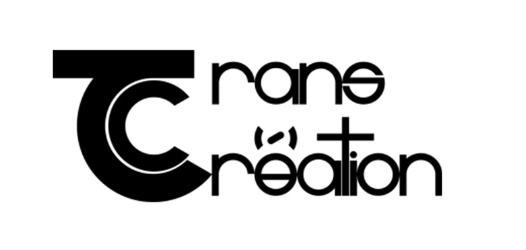 Cinema and Painting
Cinema and Painting
Transcr(é)ation, Summer 2024
*Submissions welcome in English or French
Transcr(é)ation is a specialty journal dedicated to intermediality and the dialogues between texts and films, without prioritizing either. For our 5th dossier, to be edited by John Harbour, we are calling for papers in either English or French concerning cinema and painting.
In Qu’est-ce que le cinéma T. II, Le cinéma et les autres arts (1959), André Bazin highlights the fact that multiple art critics have claimed that showing paintings within cinema is a form of treason toward them, especially because “the screen radically destroys the pictural space” (1959, p.128). Bazin concludes that “[I] cinema should not ‘serve’ or betray paintings, but rather give it a different presence” (1959, p.131). Simply put, blending both artforms does not distort them, it rather superimposes a new interpretation. Cinema pioneer Georges Méliès affirms that painting is an integral component of cinema (1907). As a painter himself, he was strongly inspired by one of his teachers, Gustave Moreau (Malthête-Méliès and Quévrain, 1980). This influence can be observed in his films, through the fact that most of them contain hand-painted decors (Berthomé, 2014).
On top of borrowing many of its codes and techniques, cinema also uses painting as its
subject. In fiction, by example, many movies come to mind such as Lust of Life (VincenteMinneli, 1956), where actor Kirk Douglas plays Vincent van Gogh, or as Girl with a Pearl Earring (Peter Webber, 2003), which suggests an interpretation of the genesis of artist Johannes Vermeer’s eponymous painting (this movie being itself the adaptation of Tracy Chevalier’s novel). This type of adaptation offers the spectator a possibility to connect the dots between the artist’s life and their creations. From there, it is possible to reinterpret the paintings under a new light and theorize how they came to be.
In animation, since there is no need to capture a profilmic event like a camera does (Massuet, 2013 ; Jean, 1995), many aesthetics can be used, such as that of painting. Loving Vincent (Dorota Kobiela and Hugh Welchman, 2017) is an excellent example of this phenomena, where life is breathed into van Gogh’s paintings in order to tell a unique story. Likewise, many animation filmmakers such as Martin Chartrand, Caroline Leaf and Alexandre Petrov, to name only a few, use paint-on-glass animation, a technique that consists in painting an image on glass, and then gradually modifying it in order to create an illusion of movement on the screen. The use of this technique is an excellent way to evoke dreaming, due to its foggy aesthetic, and metamorphosis. Other artists, such as Disney concept artist Mary Blair, have used painting in order to conceptualize the visual landscape of a film (character, decor and ambiance development). The use of painting in this context leaves us pondering on how it transposes into animation or live action films and how it can influence their development.
In documentary film, there are many examples showing a close relationship with visual arts. In Mur Murs (1981), Agnès Varda “suggests […] to let the painters talk” (Quéméner, 2009, p.114) by highlighting the work of Los Angeles artists and their murals. Varda was greatly inspired by painting for many of her films, notably by producing portraits, an element directly inherited from painting. Likewise, a production such as Sur les pas de René Richard (Esther Pelletier, 2003) blends fiction and documentary filmmaking in order to present painter René Richard’s life story and works of art while recreating the composition of his paintings on the screen. Documentary filmmaking, displaying paintings on the screen, can especially bring questions about representation: How is it possible to reproduce a painting in a cinematographic context? Precisely, how can we represent works of art with varying shapes and sizes when in cinema, “the frame is an absolutely fixed constant and even, an absolute” (Peeters, 1998 [1991], p. 15)?
For all of these examples where cinema incorporates painting, let us underline that painting has also taken cinema for a subject. Jean-Michel Basquiat cites cinema on multiple occasions in his work in order to denounce racial stereotypes black communities suffer from in pop culture (Harbour, 2023). Painter Edward Hopper was a cinephile and subsequently greatly inspired by cinema (Foubert, 2012), especially by German expressionism and film noir. He then served as an inspiration himself for many filmmakers such as Alfred Hitchcock, who incorporated many architectural elements in his films, ambiances and themes coming directly from Hopper’s work. By example, the house in Psycho (1960) was inspired by the one depicted in House by the Railroad (1925), while the main character of Rear Window (1954) spies on his neighbors through his window, voyeurism being a leading theme for both Hopper and Hitchcock. Filmmaking brings us to ponder on the possibility of developing a movie composed of thousands of images (photograms) from a single fixed image (a painting).
Many connections can therefore be traced between painting and cinema. In this dossier, we are interested in the way cinema tackles painting, but also how painting uses cinema in order to develop a language, an angle that is much less frequently represented in academic studies.
Please find below a proposed blueprint for reflection:
- Analysis of films that use painting as a subject (documentary, fiction, animation, experimental, etc.)
- Reflection on artists whose processes consists of an interaction between cinema and painting (directors, concept artists, etc.)
- Reflection on painters who reference cinema in their work
- Archival challenges linked to the conservation of paintings in the context of an institution whose mission is to preserve cinematographic work
- Study of a specific artist’s archives
- Role of painting in multimedia projections
We also accept interviews connected with the subject.
Timeline:
- Deadline for submitting your proposal (including title, 250-300 word summary, email address, affiliation and author’s biobibliography (approx. 150 words)): January 15th, 2024, to: john.harbour.1@ulaval.ca (All submissions will be evaluated and you will receive an answer before the end of January)
- Deadline for submitting accepted articles (6,000 – 8,000 words) following the
journal’s guidelines: April 30th, 2024 (peer-reviewing process could last until the
end of July) - Publication planned for September 2024
